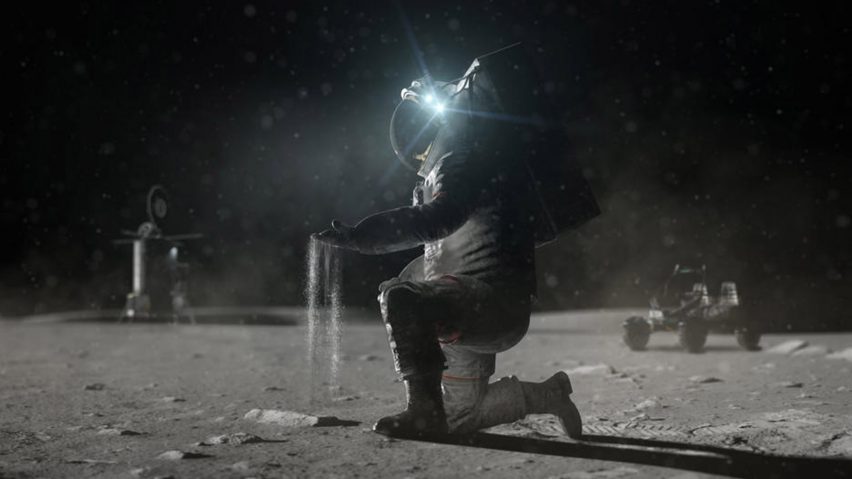NASA has selected three projects from the Rhode Island School of Design's Space Design club for its development programmes, meaning the work could one day be tested in space.
A space-dust repeller, an augmented-reality headset and a wearable container for rock samples are among the project proposals chosen for the BIG Idea Challenge and other NASA programmes.
All of the projects were born from the Rhode Island School of Design's (RISD) Space Design club, which was formed in autumn 2020.
It succeeds the RISD Rover club, which was launched to compete in the annual NASA Human Exploration Rover Challenge but had to disband because the work of building and racing vehicles as a team was not possible during the pandemic.
Instead, the RISD Space Design club came up with proposals that could be worked on remotely.
RISD design to protect astronauts from space dust
The space dust project, by students from RISD along with Brown University, was one of seven proposals selected for the BIG Idea Challenge, which had more than 100 entries.
Called TEST-RAD (Tufted Electrostatic Solution to Regolith Adhesion Dilemma), the technology is about protecting astronauts and their equipment from space dust, also known as regolith. These particles are similar in size to asbestos and can damage the lungs.
The project uses densely packed fibres that are electrostatically charged to repel the dust. The students originally planned to apply the fibres to space suits, but based on feedback from NASA engineers, they will first test them on lower-stakes items, such as a camera lens or battery cover.
The team also sees a potential future application for Earth.
"A lot of new tech comes from space research, for example Velcro," said Space Design club vice-president Bowen Zhou. "Our TEST-RAD technology might also help miners, who have similar problems with harmful dust particles."
A separate project was selected for the NASA's Micro-G Next challenge, which searches for devices that enable space exploration.
It is a dispenser that attaches to an astronaut's space suit and holds samples collected during spacewalks.
NASA will test the prototype, which was made out of folded aluminium in RISD's metal shop, in its simulated microgravity environment at the Johnson Space Center Neutral Buoyancy Laboratory.
Augmented reality headset to be presented in autumn
The third selected project is an augmented reality headset that is part of the NASA SUITS (Spacesuit User Interface Technologies for Students) Competition.
The headset would project data, maps and other information inside an astronaut's helmet during spacewalks, helping them to navigate, take field notes or keep track of their oxygen levels.
The team is currently in the research phase and hopes to present its ideas to NASA in the autumn.
The RISD Space Design Club is helping to support the teams in all three projects. The club had initially planned to submit one collective proposal, but after the students couldn't decide on one challenge to pursue, they submitted multiple applications — and had multiple acceptances.
The projects are being developed mostly virtually, with RISD taking precautions to keep students safe from Covid-19.
"In comparison to the Rover Challenge, which required a team of 12 people to physically work on the vehicle at the same time, this year's challenges are fairly easy to do remotely," said club president Sebastian Boa.
NASA regularly runs various competitions to discover and develop new potential space technologies.
One of its most famous was the 3D Printed Habitat Challenge, which had entrants design a Mars base using materials indigenous to the Red Planet.
Recently, the agency announced it has contracted Elon Musk's SpaceX to design the first commercial human lander for NASA.
Photography courtesy of RISD.

